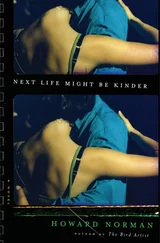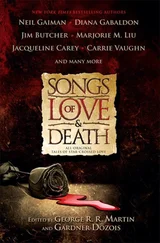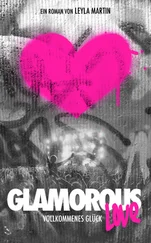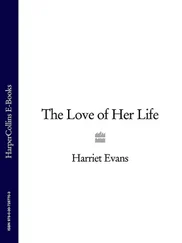Harriet Martineau - Eastern Life
Здесь есть возможность читать онлайн «Harriet Martineau - Eastern Life» — ознакомительный отрывок электронной книги совершенно бесплатно, а после прочтения отрывка купить полную версию. В некоторых случаях можно слушать аудио, скачать через торрент в формате fb2 и присутствует краткое содержание. Жанр: unrecognised, на английском языке. Описание произведения, (предисловие) а так же отзывы посетителей доступны на портале библиотеки ЛибКат.
- Название:Eastern Life
- Автор:
- Жанр:
- Год:неизвестен
- ISBN:нет данных
- Рейтинг книги:5 / 5. Голосов: 1
-
Избранное:Добавить в избранное
- Отзывы:
-
Ваша оценка:
- 100
- 1
- 2
- 3
- 4
- 5
Eastern Life: краткое содержание, описание и аннотация
Предлагаем к чтению аннотацию, описание, краткое содержание или предисловие (зависит от того, что написал сам автор книги «Eastern Life»). Если вы не нашли необходимую информацию о книге — напишите в комментариях, мы постараемся отыскать её.
Eastern Life — читать онлайн ознакомительный отрывок
Ниже представлен текст книги, разбитый по страницам. Система сохранения места последней прочитанной страницы, позволяет с удобством читать онлайн бесплатно книгу «Eastern Life», без необходимости каждый раз заново искать на чём Вы остановились. Поставьте закладку, и сможете в любой момент перейти на страницу, на которой закончили чтение.
Интервал:
Закладка:
The interest of this temple is not in its antiquity. It is of various dates; and none of them older than the times of the Ptolemies. The interest lies in the traces of the different builders and occupants of this temple, and in the history (according to Diodorus) of the Ethiopian king who built the adytum, – the most sacred part of it. This king Ergamun, who lived within half a century before our era, had his doubts about the rectitude and reasonableness of the method by which the length of kings' reigns was settled in Ethiopia. Hitherto, the custom had been for the priests to send word to their brother, the king, when the gods wished him to enter their presence: and every king, thus far, had quietly destroyed himself, on receiving the intimation. Ergamun abolished the custom, – not waiting, as far as appears, or his summons, but going up to »a high place« with his troops, when he slew the priests in their temple, and reformed some of the institutions which no one had hitherto dared to touch. Sir G. Wilkinson points out the fact 51that a somewhat resembling custom still remains in a higher region of Ethiopia, where it is thought shocking that a king should die a natural death; that is, like other people. The kings of this tribe, when they believe themselves about to die, send word to their ministers, who immediately cause them to be strangled. This is reported by the expedition sent by the present ruler of Egypt to explore the sources of the White Nile.
Though Ergamun was not willing to take the word of the priests for the will of the gods, he appears to have been forward in the service of his deities, to whom he is seen presenting offerings, and whom he proudly acknowledges as his patrons, guardians, and nourishers. The old adytum, built by him, looks hoary and crumbling, more so than the more ancient temples we have seen; but the sculptures are plainly distinguishable. It is much blackened by fires; but in one corner, where the sculptures are protected by a block of stone which has fallen across, I found a very clear group, – of the king standing between Ra and Thoth, the god of intellect and the arts, concerning whom Socrates relates a curious anecdote in the Phaedrus 52of Plato. The two gods are holding vases aloft, from which they pour each a stream of the emblem of Life; – immortalising »the ever-living Ergamun,« as his cartouche calls him. Under the cornice are four decorative borders, on the four sides of the chamber. One gives the emblems of Ra and Thoth, – the hawk and ibis, – squatted face to face in successive pairs; another, the royal cartouches, guarded by hawks with expanded wings; a third, the emblem of duration or permanency; while on the one over the door are strips of hieroglyphics. The thrones of gods and kings have a compartment left in the lower corner of the massive seat, to be filled up with devices. Sometimes this is done – sometimes not. In this adytum the compartment is occupied by the device taken from much older monuments, and seen now on the pedestals of the Pair at Thebes, – the water-plants of the god Nilus which are bound up to support the royal throne.
There was enough of colour left here to show us how materially the effect of the sculpture was made to depend upon it. The difference in the clearness of the devices is wonderful when they are seen in a mass, and when each compartment or side of a chamber is marked off by broad bands of deep colour. The supplying of details, and yet more of perspective, by painting, gives a totally different character to the sculptures; which difference ought to be allowed for where the colours have disappeared. I am not speaking here of the goodness or badness of the taste which united painting and sculpture in the old Egyptian monuments. I am only pointing out that it was the Egyptian method of representation: and that their works cannot therefore be judged of by the mere outlines. The colours remaining in this chamber are a brilliant blue, a pale clear green (which survives everywhere and is beautiful), and a dull red, – deeper for the garments, lighter for the skins.
This chamber is completely cased, except the entrance, with more modern building. It is shut in, roof and all, as if it had been pushed into a box. The old doorway, also the work of Ergamun, is built round by a later devotee. The chambers erected by the Ptolemies have some modern decorations mixed in with the ancient symbols, – such as the olive-wreath, a harp of a different make from the old Egyptian, and the Greek caduceus, instead of the native one.
Some yet more modern occupants have sadly spoiled this temple. The Christians might very naturally feel that they could not go to worship till they had shut out from their eyesight the symbols of the old faith: and we therefore should not be hard upon them for plastering over the walls. We should forgive them all the more readily because such plastering is an admirable method of preserving the old sculptures. But the Christians must have their saints all about them: and there they are, dim, but obvious enough, – with huge wry faces, and flaring glories over their heads. Some of the sculptures which have been restored, and some which appear never to have been plastered, look beautiful beside these daubs.
In the portico of this temple we first saw an instance of the more modern, the Greek, way of at once enclosing and lighting the entrance to a temple – by intercolumnar screens and doorway; called now a portico in antis. I do not remember seeing this in any of the ancient buildings, while it is found at Philae, Dendara, Isna, and other Ptolemaic erections. It has its beauty and convenience, but it does not seem to suit the primitive Egyptian style, where the walls were relieved of their deadness by sculpture, but, I think, never by breaks.
There are some Greek inscriptions on different parts of this temple, and two certainly which are not Greek. Whether they are Coptic, or the more ancient Egyptian Enchorial writing, it is not for me to say. The outside of the temple is unfinished, and fragments of substantial stone wall about it appear like work left, rather than demolished. Within one of these walls I found a passage, a not uncommon discovery among the massive buildings, which might thus conveniently communicate by a safe and concealed method.
This was our Work before breakfast. Another temple was ready for us after dinner – that of the ancient Tutzis, now Garf Hoseyn.
I walked on shore for a few minutes, while dinner was hastened, and saw some agricultural proceedings which were amusing to a stranger. Two or three donkeys were bringing down dust and sand from the desert, across a pretty wide tract of cultivated land, to qualify the richness of the Nile mud. Their panniers were mere frail-baskets; and when they were emptied, the wind (which was strong) carried away a good proportion of the contents; and the rest looked such a mere sprinkling that I admired the patience which could procure enough for a whole field. But carts are not known so high up the Nile, nor panniers worthy of the name. We had moored just under a sakia, whose creak was most melancholy. This creak is the sweetest and most heart-stirring music in the world to the Nile peasant; just as the Alp-horn is to the Swiss. It tells of provision, property, wonted occupation, home, the beautiful Nile, and beloved oxen. Any song would be charming with such a burden. But to us it was a mere dismal creak; and when it goes on in the night, as happens under a thrifty proprietor, I am told it is like a human wail, or the cry of a tortured animal. So much for the operation of the same sound through different ideas! The shed of this sakia was really pretty: – inhabited by a sleek ox and a sprightly boy-driver; shaded by a roof of millet-stalks, and hung over with white convolvulus and the purple bean of this region. Our Dongola sailor caught up a little romping boy from among his companions, and brought him on board by force. The terror of the child was as great as if we had been ogres. I could not have conceived anything like it, and should be glad to know what it was that he feared. His worst moment of panic seemed to be when we offered him good things to eat; though his companions on shore were by that time calling out to him to take what we offered. His captor forced some raisins into his mouth; and his change from terror to doubt, and from doubt to relish when he began to taste his dose, was amusing to see. Raisins were not a bribe to detain him, however; he was off like a shot, the moment he was released. I suppose his adventure will be a family anecdote for many generations to come.
Читать дальшеИнтервал:
Закладка:
Похожие книги на «Eastern Life»
Представляем Вашему вниманию похожие книги на «Eastern Life» списком для выбора. Мы отобрали схожую по названию и смыслу литературу в надежде предоставить читателям больше вариантов отыскать новые, интересные, ещё непрочитанные произведения.
Обсуждение, отзывы о книге «Eastern Life» и просто собственные мнения читателей. Оставьте ваши комментарии, напишите, что Вы думаете о произведении, его смысле или главных героях. Укажите что конкретно понравилось, а что нет, и почему Вы так считаете.












